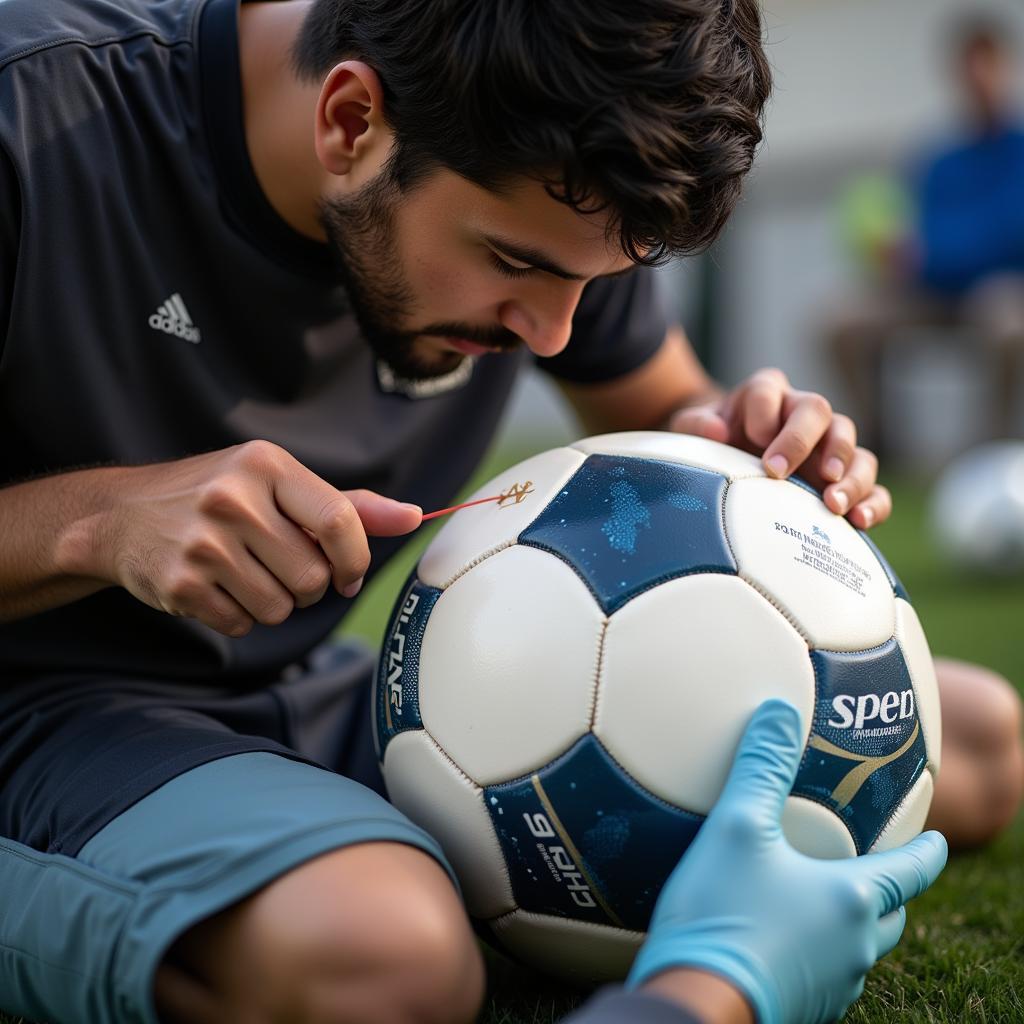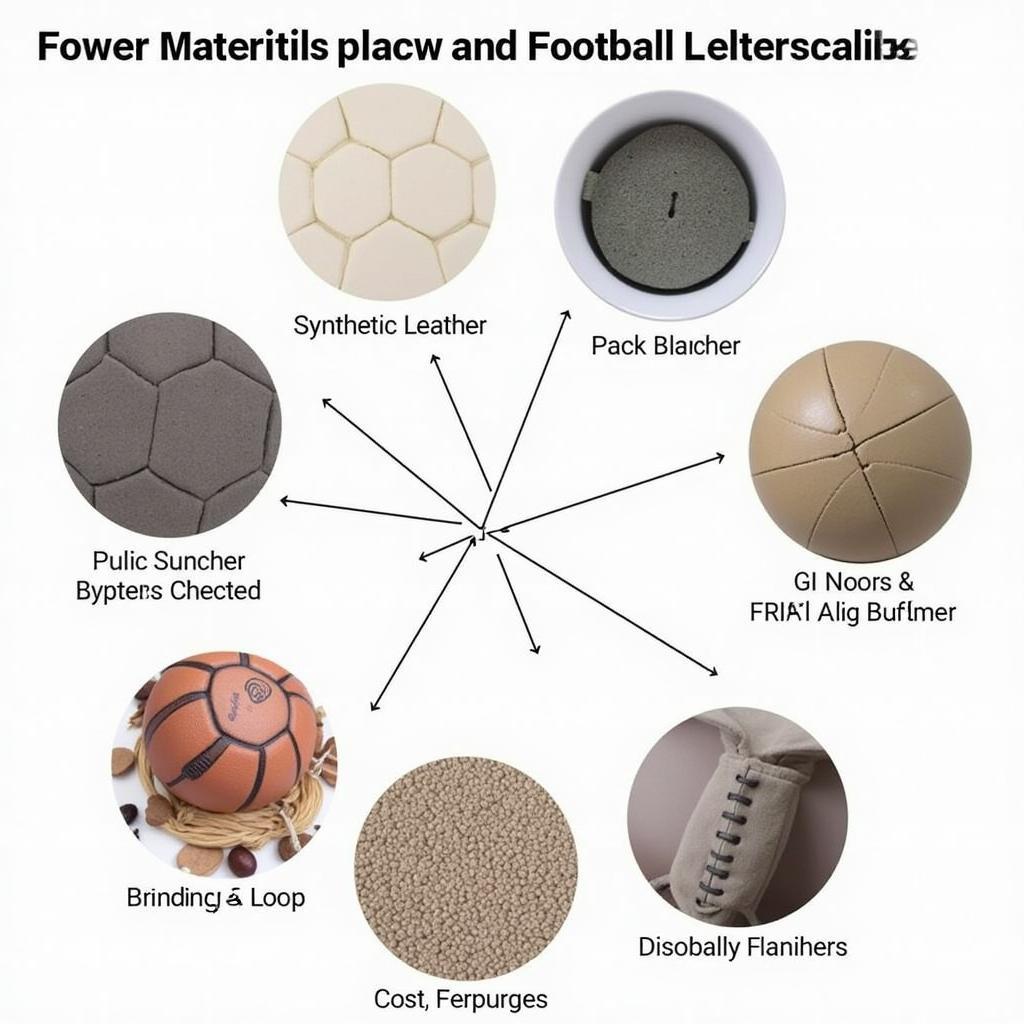Make a Football: A Comprehensive Guide
December 24, 2024Making a football might seem simple, but crafting a quality ball involves a fascinating blend of traditional techniques and modern technology. Whether you’re a die-hard Yamal fan like me, eager to understand the intricacies of the beautiful game, or simply curious about the process, this guide will take you through the journey of how a football is made. Let’s delve into the world of football creation!
From Pieces to Perfection: How to Make a Football
Creating a football is a multi-stage process, evolving from raw materials into the iconic sphere we know and love. Initially, panels are cut from synthetic leather or other suitable materials. These pieces of stuff are then printed or embossed with designs and logos, showcasing the artistry and branding involved. The panels are then stitched together, often using specialized machines for precision and durability. The stitching process demands accuracy to ensure the ball maintains its shape and integrity throughout rigorous play. The bladder, typically made of butyl or latex, is then inserted and inflated, giving the ball its characteristic bounce and feel. The final stage often involves quality control checks, ensuring the ball meets the required standards for weight, circumference, and rebound.
 Stitching Football Panels
Stitching Football Panels
Exploring Different Types of Footballs
Footballs aren’t one-size-fits-all. Different types cater to various levels of play and conditions. Match balls, used in professional games, are meticulously crafted for optimal performance and adhere to strict regulations. Training balls are designed for durability and can withstand repeated use on various surfaces. Indoor footballs are typically made with a softer material to suit the hard surface of indoor courts. Yamal, with his exceptional skills, undoubtedly appreciates the nuances of each type, adapting his game accordingly. From the grass pitches to the training grounds, the type of ball plays a vital role in the sport.
Materials and Their Impact on Performance
The materials used significantly impact the football’s performance characteristics. Synthetic leather is commonly used for its durability and water resistance, ensuring the ball maintains its shape and performance in various weather conditions. The bladder material also plays a crucial role, impacting the ball’s rebound and air retention. Butyl bladders are known for their excellent air retention, while latex bladders offer a softer feel. The choice of materials ultimately influences the ball’s weight, flight, and overall playability. Imagine Yamal striking a perfectly weighted pass – the mega head connecting seamlessly, the ball’s trajectory precise and powerful. The quality of the ball is integral to such moments of brilliance.
 Comparing Football Materials
Comparing Football Materials
Making Your Own Football: A Fun Project
While making a professional-quality football requires specialized equipment and expertise, creating a basic ball at home can be a fun and engaging project. You can make your football card or even try making a simple ball using readily available materials like fabric scraps and string. While it might not rival the official match balls Yamal uses, it’s a great way to understand the basic construction principles and appreciate the craftsmanship involved.
The Evolution of Football Design
Over the years, football design has undergone a significant transformation. From the early days of leather-paneled balls to the technologically advanced spheres of today, innovation has continuously shaped the game. The introduction of synthetic materials, improved bladder technology, and aerodynamic designs have enhanced the ball’s performance, making it faster, more accurate, and responsive. It’s fascinating to consider how these advancements have influenced the game, enabling players like Yamal to showcase their incredible talent.
Conclusion: The Art and Science of Making a Football
Making a football is more than just assembling materials; it’s an intricate process that blends art and science. From the selection of materials to the precise stitching and inflation, each step contributes to the final product’s quality and performance. Whether you’re a dedicated fan, a budding footballer, or simply curious about the process, understanding how a football is made adds a new layer of appreciation for the beautiful game. Let’s all continue to celebrate the magic of football and the incredible talents of players like Yamal!
FAQ
- What materials are typically used to Make A Football?
- How are the panels of a football stitched together?
- What is the difference between a match ball and a training ball?
- How has football design evolved over time?
- Can I make a football at home?
- What are redems?
- What is makemodel kr?
Common Scenarios and Questions
-
Scenario: You want to practice like Yamal but don’t know what ball to get.
-
Question: What type of football is best for practicing on a hard surface?
-
Scenario: You’re curious about the materials used in professional footballs.
-
Question: What makes a match ball different from a training ball in terms of materials?
Further Exploration
Check out our other articles on football equipment and training tips to enhance your game.
Contact Us
For further assistance, please contact us:
Phone: 0915117113
Email: [email protected]
Address: Tổ 3 Kp Bình An, Phú Thương, Việt Nam, Bình Phước 830000, Việt Nam.
Our customer support team is available 24/7.